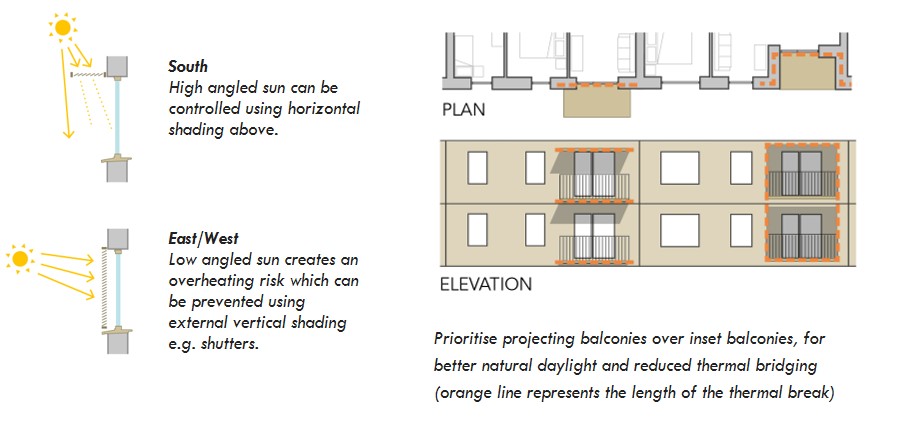Solar shading
When orientating buildings South, there is an elevated risk of overheating in summer. However, this can be counteracted with solar shading, applied to South, East and West elevations.
South facades offer the best opportunity to protect from solar gain.
fixed shading such as horizontal brise soleil are really effective. In summer, when the sun is at a higher angle in the sky, they shade from unwanted solar gain, but in the winter, when sun angles are lower, useful solar gain still enters the space. For the depth of horizontal brise soleil, a useful rule of thumb is half the window height. In practice though, any amount of shading will be beneficial.
Balconies offer a similar opportunity to shade South facing windows. A preference should be made for stacked projecting balconies, as inset balconies have higher levels of thermal bridging and can create dark, dimly lit rooms. For top floor balcony windows, where there is no balcony above, a canopy or brise soleil should be considered.
East and West facades are harder to shade effectively. Vertical brise soleil are not generally recommended as they can reduce useful solar gain in winter and cannot shade the sun early or late in the day. Movable shutters or external blinds are recommended. These can be left open in winter but closed in summer. They can be perforated or slatted to still allow air flow, or lockable to provide security.
Design Actions
- South elevations – use horizontal brise soleil and projecting balconies
- East / west elevations – use shutters or external roller blinds
- Prioritise deck access over internal corridors
Page updated: 27/09/2022

